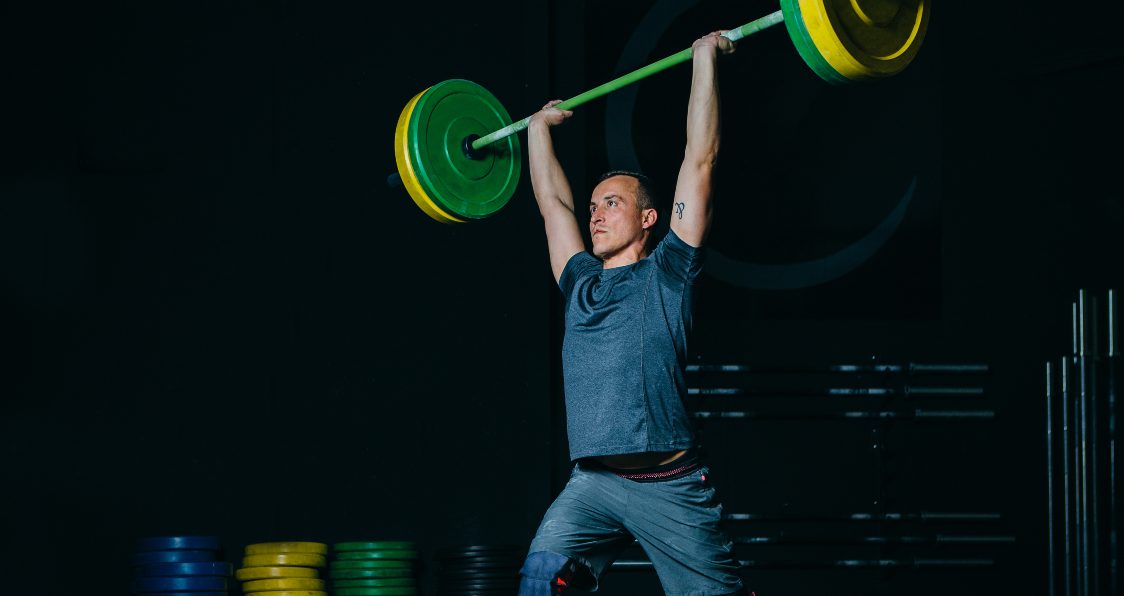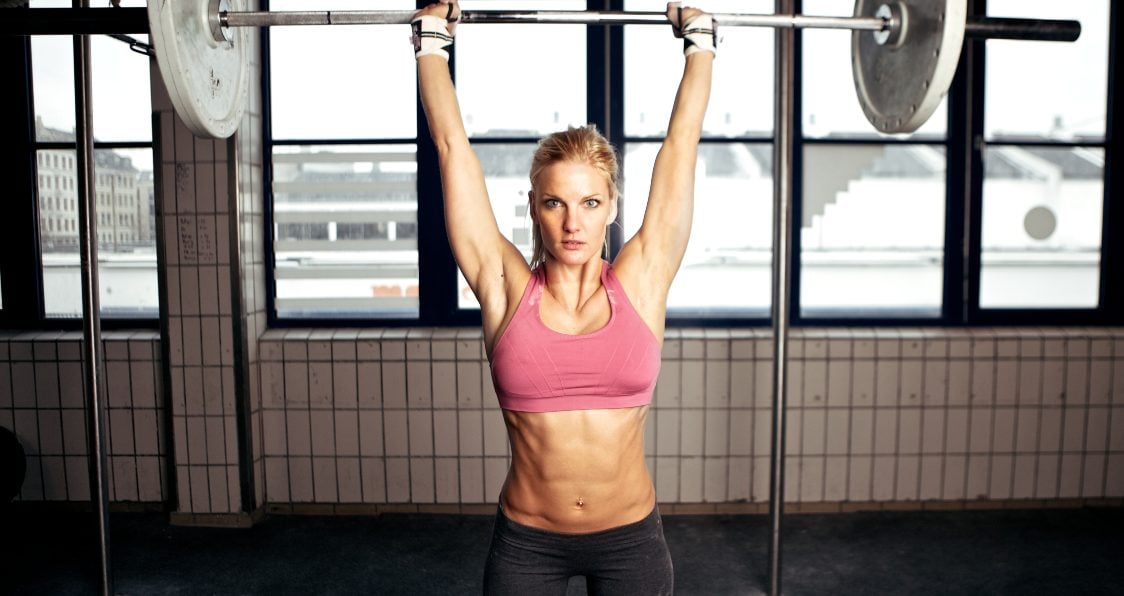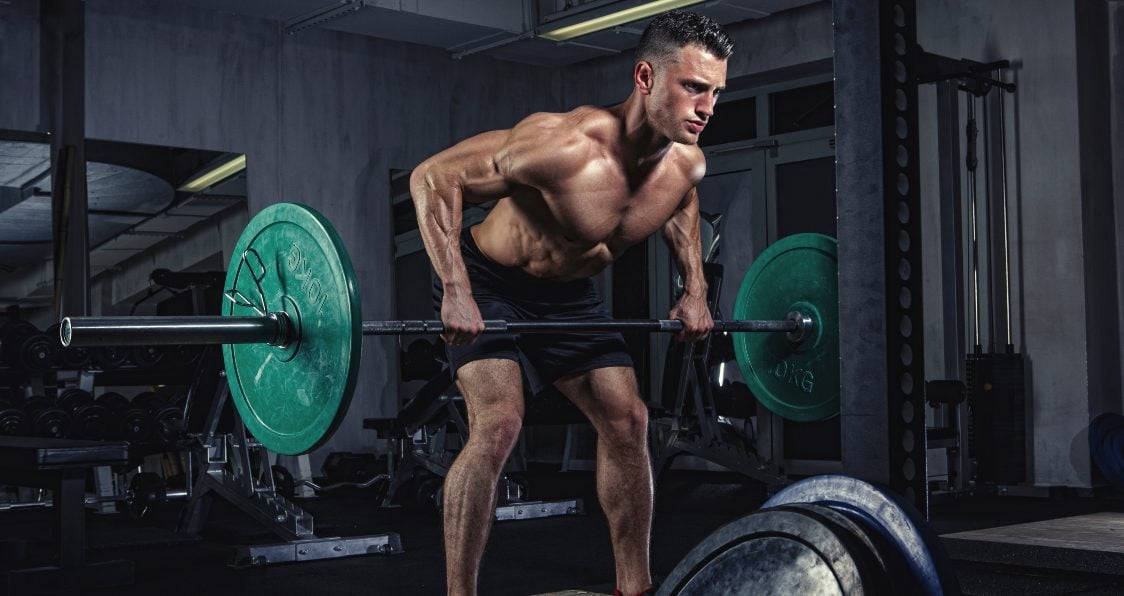Boost strength, muscle, and support with a weightlifting belt for these monster exercises.
For serious lifters and athletes looking to stay as safe as possible in the gym, a weightlifting belt is one of those accessories that must be in your gym bag. While there are plenty of exercises you don’t need it for, having a quality belt on standby will better prepare you for those bigger, more monstrous lifts. Able to provide support and stability, while also being versatile and comfortable, the weightlifting belt can take you a long way.
The nice part about a weightlifting belt is that it is a convenient lifting tool that will only work for your benefit. And with our training plans loaded with massive lifts, the choice to protect yourself is a wise one. We’ve pulled together some of those top exercises for you as a serious lifter to use a weightlifting belt with so you can better protect yourself and see huge gains.
Best Exercises For A Weightlifting Belt
- Back Squat
- Deadlift
- Clean & Jerk
- Overhead Standing Press
- Front Squat
- Barbell Rows
- Bench
Back Squat
The back squat is a classic barbell exercise perfect for building strength and size in your lower body. As a great muscle builder, this is traditionally a staple in routines for serious lifters.
Using a weightlifting belt for this exercise allows you to better support your low back when under serious weight so you maintain form and stay physically healthy for heavy squats.
Back Squat Benefits
- Build lower body strength: This exercise works your quads, hamstrings, and glutes for effective muscle growth while also relying on your core for stability and optimal movement.
- Increase power and explosiveness: With that increased growth, and the nature of the squatting movement, you can increase power and explosiveness for those sport specific movements and other bigger lifts.
How To Do The Back Squat
Rest the barbell on your traps and shoulders and have your feet shoulder width apart. With an engaged core, bend your knees while keeping your spine neutral, squatting down to your optimal range of motion. Once at the bottom, drive through your feet to return back to your starting standing position.
Deadlift
The deadlift is one of those powerlifting exercises that everyone loves to see huge PRs. A great muscle builder, this also improves power and allows you to maximize pulling movements.
The nice part about using a weightlifting belt is that it protects your back, which is often a casualty of this lift given the load you undergo.
Deadlift Benefits
- Total body strength: This lift builds strength in many muscles, including those upper and lower body ones, while building strength in a position that requires movement from your hips.
- Improves functional strength: Given the nature of this movement, it will reduce your chances of injury and work to improve more functional and everyday movements.
How To Do The Deadlift
With your feet hip-width apart, grab the bar with an overhand grip and engage your core. Keeping your back flat the entire time, lift the weight off the floor, keeping the bar in contact with your legs the entire time. Hinging at the hips, pause for a brief moment once extend and lower back to the starting position.
Clean & Jerk
The clean & jerk is a powerful movement where you get that weight overhead quickly and safely. The two parts of this lift are the clean, getting the barbell off the floor, and the jerk, moving that weight into the finish position.
Given that this movement is quick and powerful, a weightlifting belt provides that much needed support to take any load off your back that can cause unwanted pain and injury.
Clean & Jerk Benefits
- Better athletic performance: By combining strength and muscular endurance into one quick lift, you work to boost overall athletic performance and ability for other training session or competitions.
- Enhance focus and mind-muscle connection: Given the nature of this lift, over time, you will improve focus and mind-muscle connection as you need to nail down form and stay engaged for the entire portion of this exercise.
How To Do The Clean & Jerk
With your feet hip-width apart, set your shoulders over the barbell. Initiate the clean portion of this exercise with an engaged core and neutral spine, pulling the bar up your legs as if it were like a deadlift. For the jerk portion of the lift, once the bar is at hip level, drive your hips and lift the bar across your body, rotating your elbows so the bar lands in a front rack position. Drive up from the squat and as you stay engaged, push the weight overhead. One foot may be set back a bit as you get balanced, but once comfortable, bring that foot in line with the other.
Overhead Standing Press
The overhead standing press is a great exercise to build shoulder strength and build some boulder shoulders to add to your physique. With this being an important lift to keep your core engaged, your back may feel strain as you lift more and more weight.
A weightlifting belt can come in handy here for keeping your core supported and taking some of that strain off your back.
Overhead Standing Press Benefits
- Increase shoulder strength: Really build your shoulders with this exercise while also improving mobility by optimizing overhead range of motion.
- Improve core stability: Your core is essential for staying stable and grounded and with this lift, you will feel your core getting work done in efforts to improve overall stability.
How To Do The Overhead Standing Press
Set up your bar with the desired amount of weight and stand with your feet shoulder width apart. Grab the bar so it is at about your upper chest and engage your core for stability. When ready, lift the bar overhead, extending your arms and locking them out at the top. Continue this overhead press movement for your desired number of reps.
Front Squat
The front squat is a great compound exercise to strengthen your legs and hips, similar to the back squat, except the bar is in front of you instead of on your back. This makes this lift a little more friendly on your spine yet still effective for building muscle.
A weightlifting belt is perfect for this lift to add stability and reduce even more strain that may hit your low back.
Front Squat Benefits
- Less back strain: Given the nature of the bar being in front, this does reduce back strain so you only feel more supported and able to lift more weight.
- Improve leg growth: As a nice complementary lift to other exercises, this will build effective lower body growth, especially in your quads.
How To Do The Front Squat
Rest the bar across your shoulders in the front and tighten your core. Set your hips back as you engaged in the squatting motion, continuing down to your optimal range of motion. Drive through your feet and return back to the top of the lift.
Barbell Rows
Barbell rows are perfect for strengthening your lats as you seek a stronger and wider back. Great for people of all fitness levels, this allows for better posture while also increasing strength.
Using a weightlifting will better help you tackle those strength goals by keeping you more supported as you show your lats some attention.
Barbell Row Benefits
- Stronger lats: Working to build better lat strength, you enhance those pulling movements while also building a bigger back.
- Better posture: Working muscles often overlooked, this will reduce pain and start to fix that poor posture.
How To Do The Barbell Row
Standing in a medium stance and grab the bar with a neutral grip. Hinging at the waist, pull the bar to your chest. It is important to keep a tight core and neutral spine throughout this movement to alleviate any unwanted pain.
Bench Press
The bench press is another one of those lifts that we just love to see big numbers. Able to increase strength and size in our chest, this works for better pushing movements and can aid in a buff aesthetic.
While it might not be as common to use a weightlifting belt for the bench press, this can help alleviate arching in your back that takes place during really big lifts, thus preventing any unwanted injury that can keep you out of the gym.
Bench Press Benefits
- Stronger pecs: Building bigger and stronger pecs enhances pushing movements while beefing up your physique so others envy you.
- Increase pressing power: Boost pressing power for other lifts and sport specific movements vital to your training and performance success.
How To Do The
Lie on the bench with your feet planted on the floor. Grab the bar with your hands a little more than shoulder-width apart. Arch your lower back slightly. While this is debated, an arched lower back can help keep the spine neutral and the back tight. Lift the bar off the rack and gently lower to your chest as you breathe in. Your forearms should be about 90 degrees from the ground as you touch your chest and with your feet planted on the ground, initiate the upward movement to return to the starting position.
Benefits Of A Weight Lifting Belt
The benefits of a weightlifting belt far exceed the potential downsides people think of when debating on using on. While a weightlifting belt may seem cumbersome to use, equipment companies today have started relying more on feedback to make these belts as accessible and comfortable as possible.
Benefits of using a weightlifting belt include:
- Offer support and stability: These belts are not braces and will work to support your core when lifting heavy weight. Taking a load off your back, they can increase stability for better range of motion and an increased sense of control (1,2) while providing good intra-abdominal pressure and core support for those heavy lifts.
- Prevent injury: By taking strain off certain areas, like your low back, you protect yourself against injury and work to reduce unwanted pain with the increased core support.
- Allow for bigger lifts: With the increased support and stabilization, you can better tackle those lifts by putting on more weight for increased gains with proper form (3).
- Comfortable and versatile: They are comfortable around your waist and versatile for optimal movement so you aren’t restricted when working on specific exercises and heavier lifts.
What To Look For In Weight Lifting Belts
Finding the right weightlifting belt can be challenging but the right one is out there. To start, consider whether you want a high-quality leather belt or a nylon one. A leather belt is a very popular choice and will provide great support for your core and low back during those heavy lifts.
Nylon lifting belts are more flexible and versatile but may not give you the same support as a leather belt. It really depends on the load and on you deciding between a leather belt or nylon but both will provide for the same width for the entire belt regardless when used with heavy weights.
Also, consider the point of attachment for your lifting belts being a prong stainless steel buckle, lever, or Velcro strap. Velcro will typically be associated with a nylon belt and the other options allow for more convenience and a snug fit, dependent on your style of belt and if you want Velcro belts for that extra support. It is really a personal preference.
Why A Lifting Belt Is Worth It
A lifting belt is worth buying, whether they be leather belts or nylon belts, because these are perfect for serious athletes or recreational athletes. With increased intra-abdominal pressure you get just the right amount of support to tackle any big lifts.
Made from quality materials, you will see why powerlifting belts, or those used by bodybuilders, work to keep you safe and why wearing a belt only works for your benefit. With helpful tips out there for how to properly use a lifting belt, you will better tackle these exercises above and work to boost your gains and all-around performance.
Check out our list of the Best Weightlifting Belts for more great lifting products for total support and gains!
Wrap Up
Weightlifting belts have the ability to boost your gains and allow for those bigger lifts. By keeping you supported and more stable, you allow yourself the opportunity to lift more weight to see that increase in strength you want most with excellent core support with higher weight. Without fear of injury, the right weightlifting belt will give you more confidence when under so much weight, increase core strength for better balance, and provide the ability to tackle maximal loads while wearing a belt. These exercises are perfect for using a weightlifting belt and you will see those results you want most with the right belt in your gym bag.
Let us know what you think in the comments below. Also, be sure to follow Generation Iron on Facebook, Twitter, and Instagram.
References
- Miyamoto, K.; et al. (1999). “Effects of abdominal belts on intra-abdominal pressure, intra-muscular pressure in the erector spinae muscles and myoelectrical activities of trunk muscles”. (source)
- Finnie, S.; et al. (2002). “Weight Lifting Belts: Motivations For Use”. (source)
- Zink, A.; et al. (2001). “The effects of a weight belt on trunk and leg muscles activity and joint kinematics during the squat exercise”. (source)














